From the old to the new
As we left one of Moscow’s numerous ring roads and headed out of town Karen, the voice of our GPS and constant travel companion, said “Head straight for 608 kilometres”. Yes, exactly. Russia is a huge country and we were visiting only a small corner of it but still the dimensions of this place were immense. We followed a road westward out of the country’s capital with a plan to spend the next two days driving to the border of Estonia, our next country. If only it was that easy.
Russia has a population of about 145 million but they are spread out over such a large country that once you leave the large cities there is minimal signs of life in the rural areas. We followed the M9, for the most part a good two lane road with light traffic, and passed through hours of boreal forest with virtually no towns of any size along the way. Our major distraction for the day was coming upon what appeared to be a head-on accident, police and bystanders all around, two uncovered dead bodies lying neatly on the road waiting for pick up.
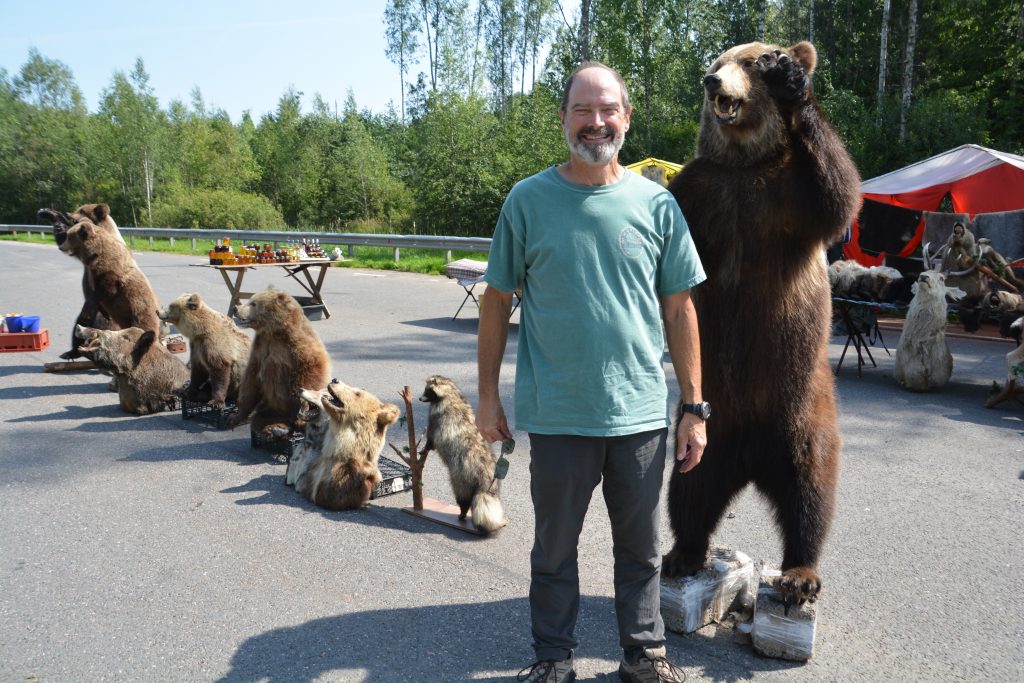
I was just walking down the highway when this bear attacked me…strange what you can buy on these roadside stalls
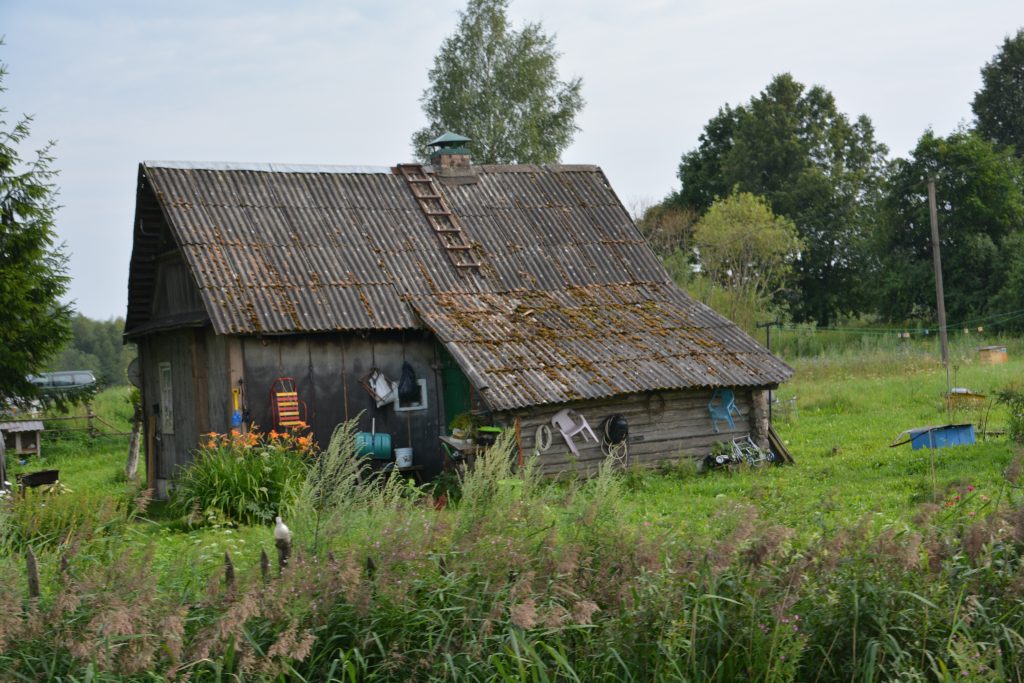
Not much but they call it home. I wonder what its like living here in the dead of their miserably cold winters.
Our last night in Russia was, perhaps appropriately, at a large dirt truck stop near the ramshackle town of Pustoshka which provided us the three key requirements of any spot – permission, security and if we’re lucky, toilets and showers. Permission and security go hand in hand – we need to make sure that the locals are okay with us being there and we won’t get hassled. Through the evening we couldn’t avoid tracking the large shirtless Russian truck drivers walking to and from the rugged showers in the corner of the large dusty grounds. The levels we’ve sunk to.
We spent the following morning tracking north-westward towards the large town of Pskov before veering south to the border town of Pechory. This was our best drive in Russia, through small villages, getting a better look at how these marginalised people live. The buildings were run down, the road in poor condition and the people waiting at the bus stops looked forlorn and weary. We wandered through a Sunday market in one town, stopped on the roadside a couple of times to buy fruit and veg from old ladies sitting in the shade. Really good stuff.
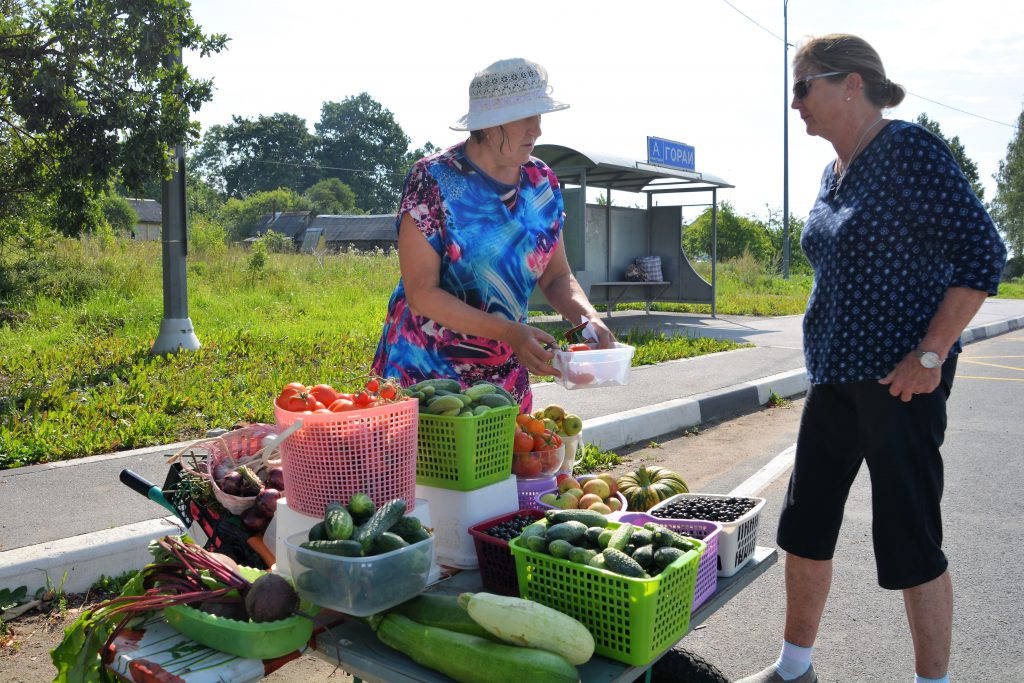
Julie preferred buying our produce from these old ladies who have their own backyard veggie patches. We later figured out we paid about three times over the local market rate. Never mind, it went to a good cause.
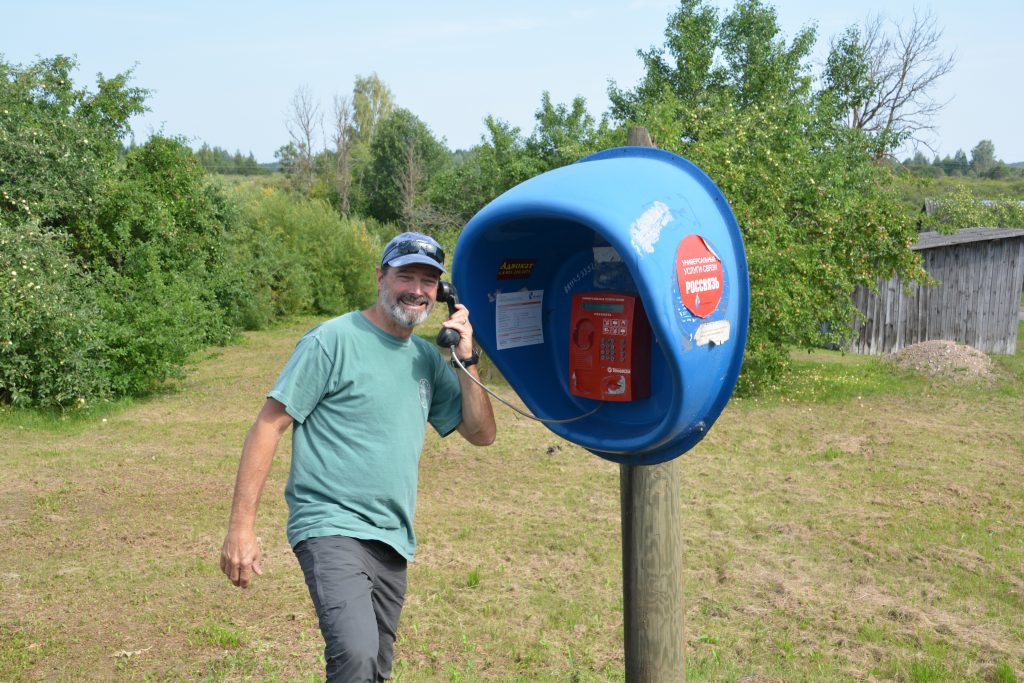
We found these simple public phone booths everywhere. The locals don’t have phones in their homes but they have a phone card for these public boxes.
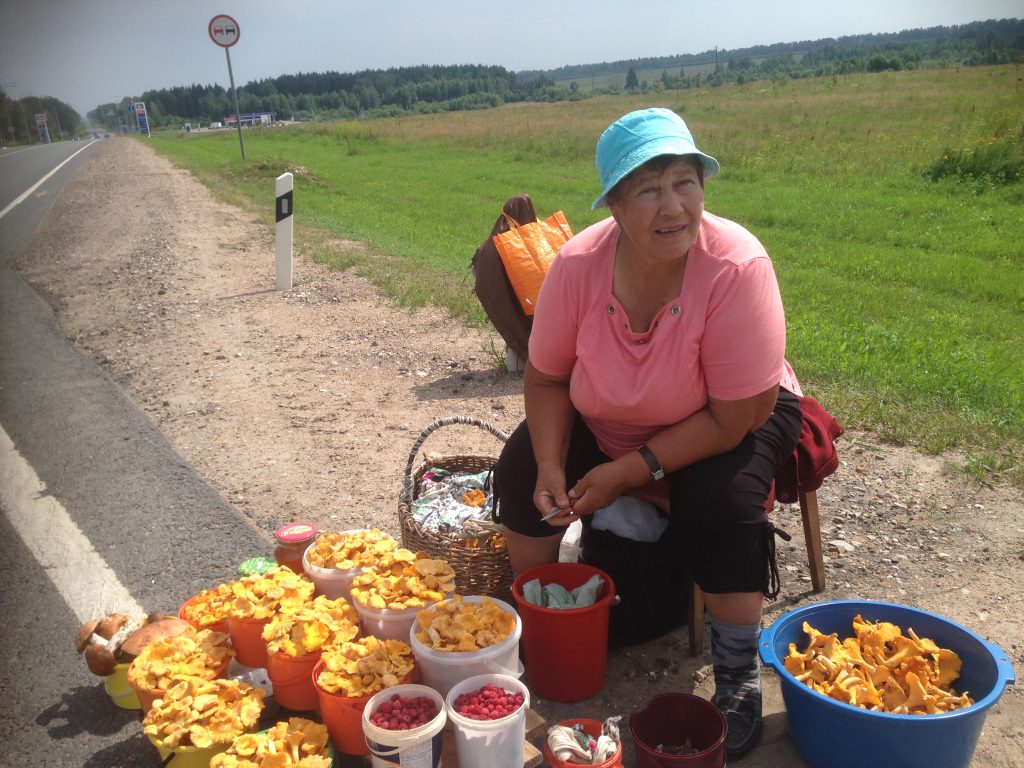
Like many roadside stalls, this lady was selling orange Chanterelle mushrooms and little tart raspberries but her tourist prices were ridiculously high
Just through the town of Pechory, which was part of disputed territory that had been passed back and forth between Russia and Estonia a number of times in its history, we crossed the border into Estonia. The whole crossing took about an hour, not too bad, but we had to open Tramp up twice while all the interested bystanders had a good look at our mighty beast. Finally we crossed into Estonia and were back in the European Union and the territory of our dreaded Schengen visa.
Estonia is the northern most of the three Baltic states – with Latvia and Lithuania, and like their cousins they have spent most of the last 300 years under direct or indirect control of Russia. They only gained their most recent independence in 1991 and have enthusiastically jumped into the European club with a vibrant and growing economy, a heavy focus on education, a strong agricultural sector and a trendy tourism industry that provides a mix between the eastern European and Scandinavian culture.
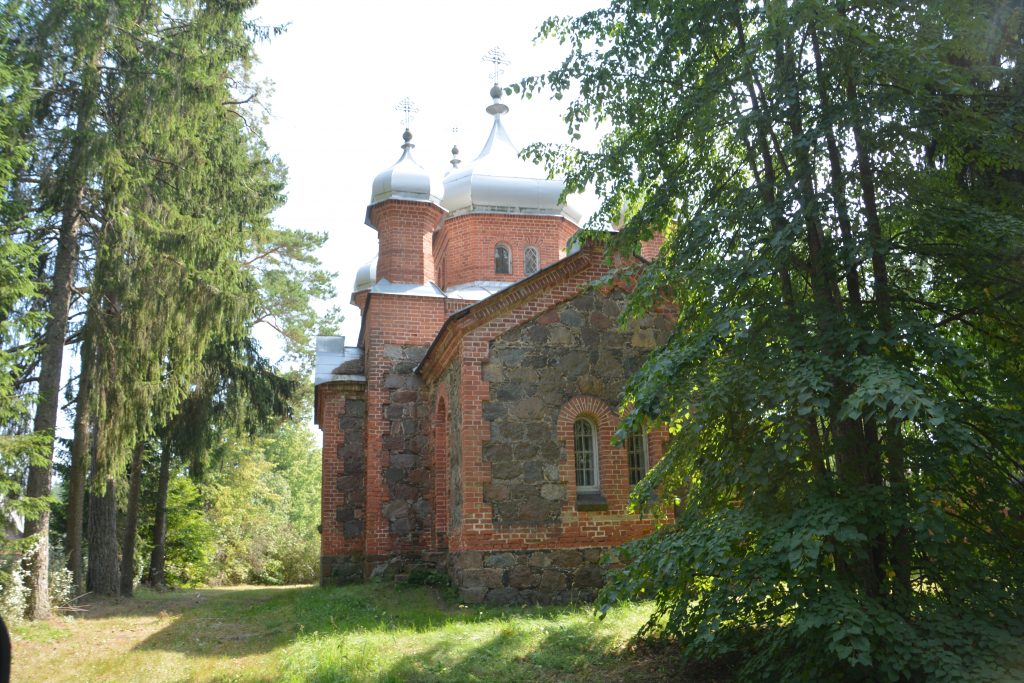
We immediately felt a new vibe in Estonia, including many beautifully restored local eastern orthodox churches like this one
We immediately noticed the difference. Homes were much tidier, lawns mowed, buildings painted. The fields of grain were healthy and well-tended. There was minimal rubbish around, the roads were better and our first contact with the locals found people who spoke some English. We were back in Europe.
We stopped at Estonia’s second largest town of Tartu, the self-proclaimed cradle of Estonian culture, host of the largest university in the country which sits on the hill in the middle of town and featuring a splendid main square on the river in the old part of town. Tartu oozed with character, a bopping university town with a cathedral dating back to the 13th century, great history, cobblestone streets and obvious civic pride. We liked it.
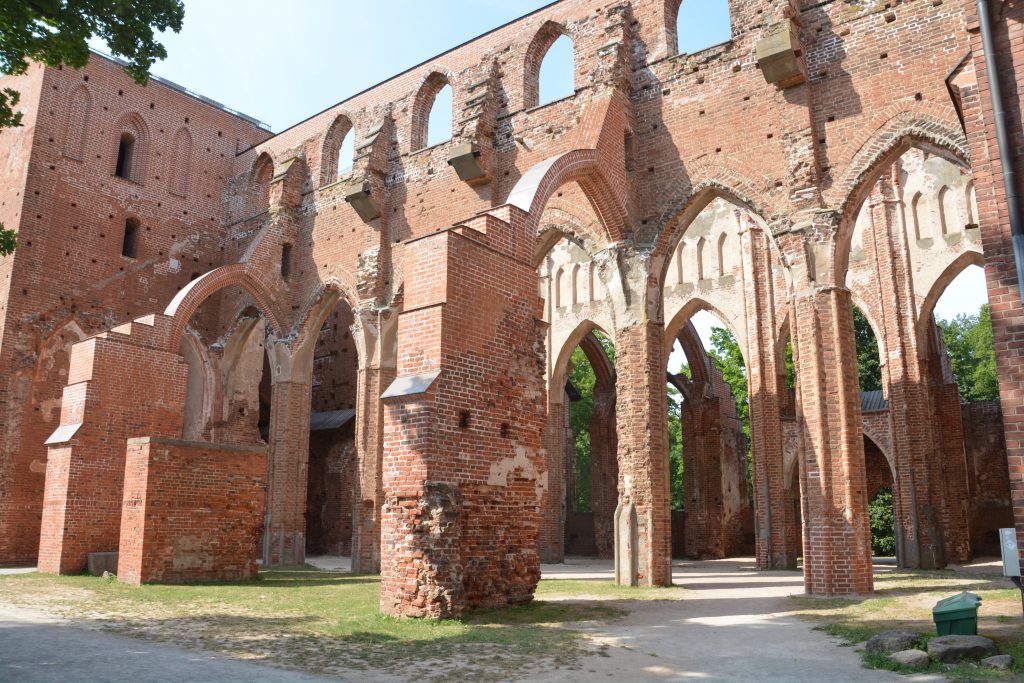
The medieval cathedral in Tartu was partly in preserved ruins and another part was restored to house a museum
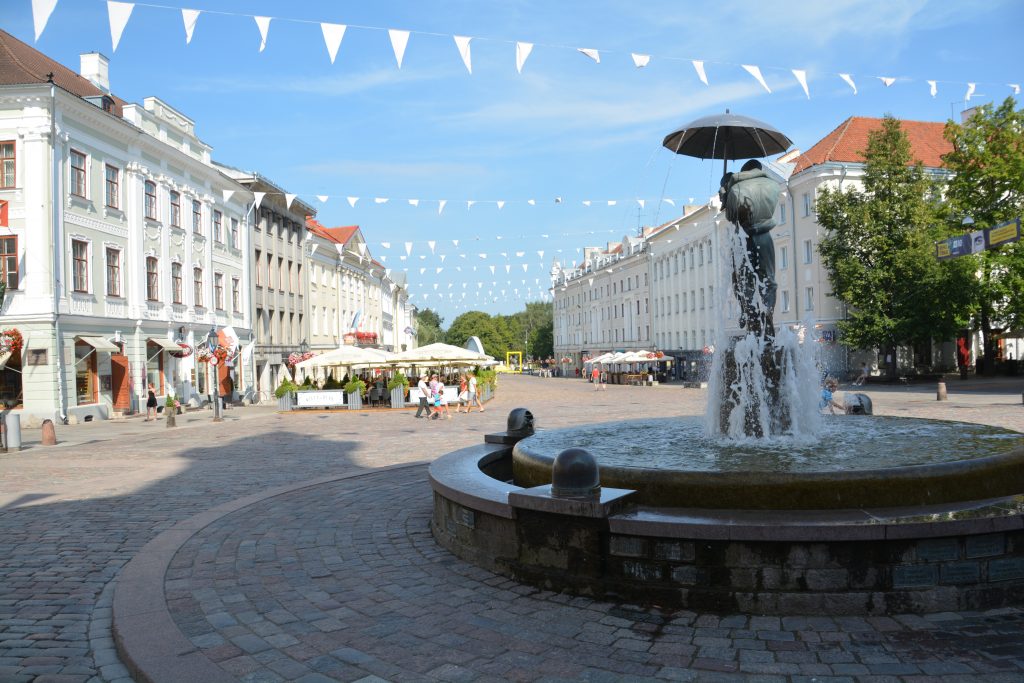
The main square of Tartu with its famous kissing students fountain was very cool…feeling very much like Europe
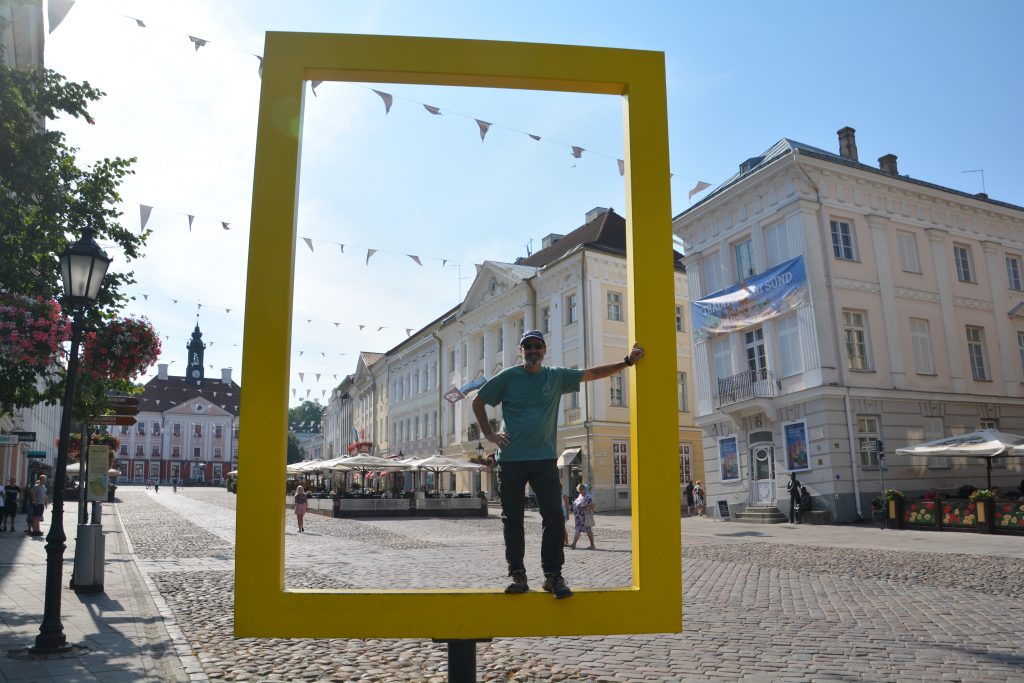
Not sure if this local piece of art had anything to do with National Geographic but I couldn’t resist climbing up into it
We camped that night on the shores of giant Lake Peipsi near the little coastal town of Mustvee in a quirky little campground with a few cabins and one other camper. The scene was tranquil, the mood was light and we raised our glasses to a brief but unique and fascinating visit to Russia.
But Estonia, which Julie and I knew very little about, was also proving to be unique and fascinating. We drove through rolling fields of grain and large stands of tall pines to the historic town of Rakvere where we visited the 13th century church and the outstanding castle of the same vintage sitting majestically on top of the hill. We really enjoyed the castle, now filled with locals in costume helping people in such medieval skills as blacksmiths, jousting, archery and surviving the torture chamber. Good fun.
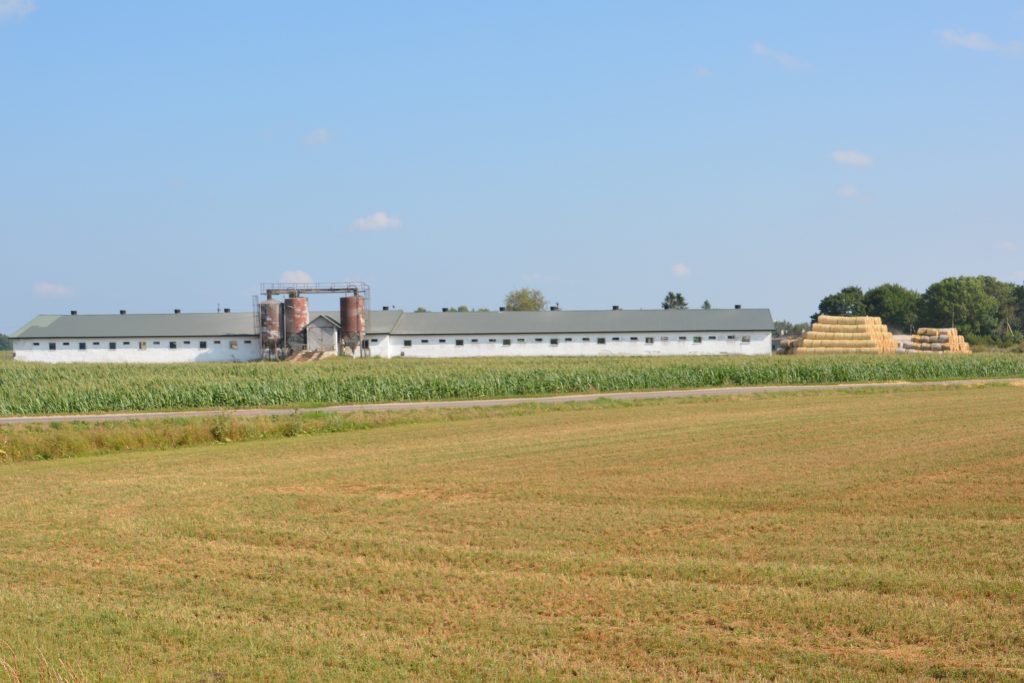
We saw large farming complexes in Estonia which seem to still be operating – perhaps a successful leftover from the Russian collective farm system
Lahemaa National Park protects some of the northern coastline of Estonia where the Gulf of Finland laps its shores. We spent the afternoon in the park, enjoying the coastline on a couple of short walks and exploring the quaint little holiday villages that are inside the park’s boundaries.
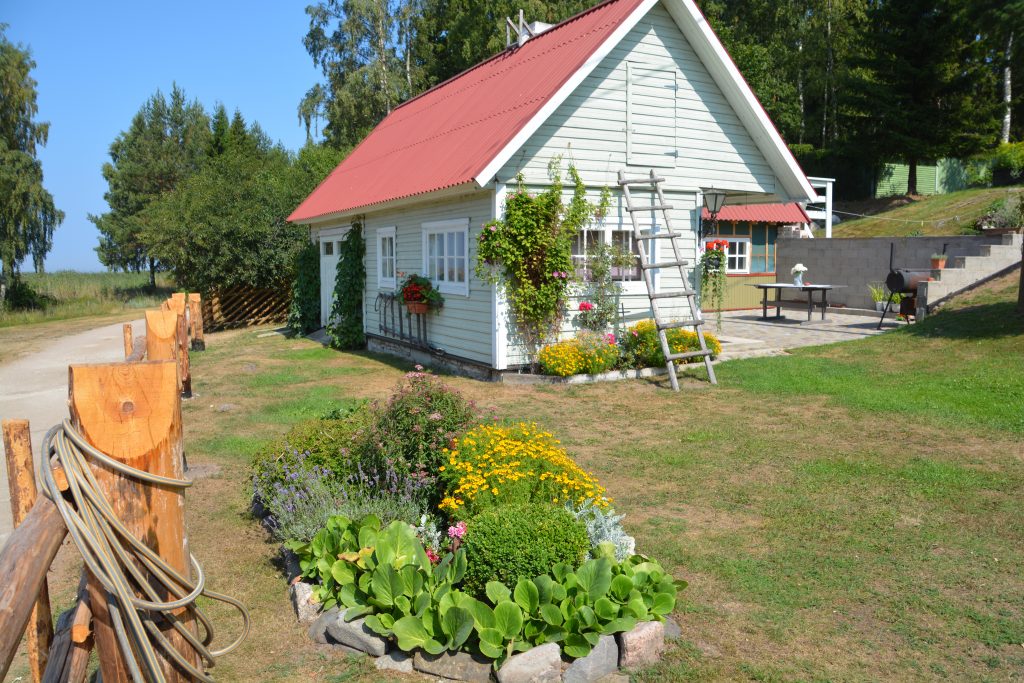
A restored fishing cottage, perhaps a little spiffier than the original, in the national park on the shores of the Gulf of Finland
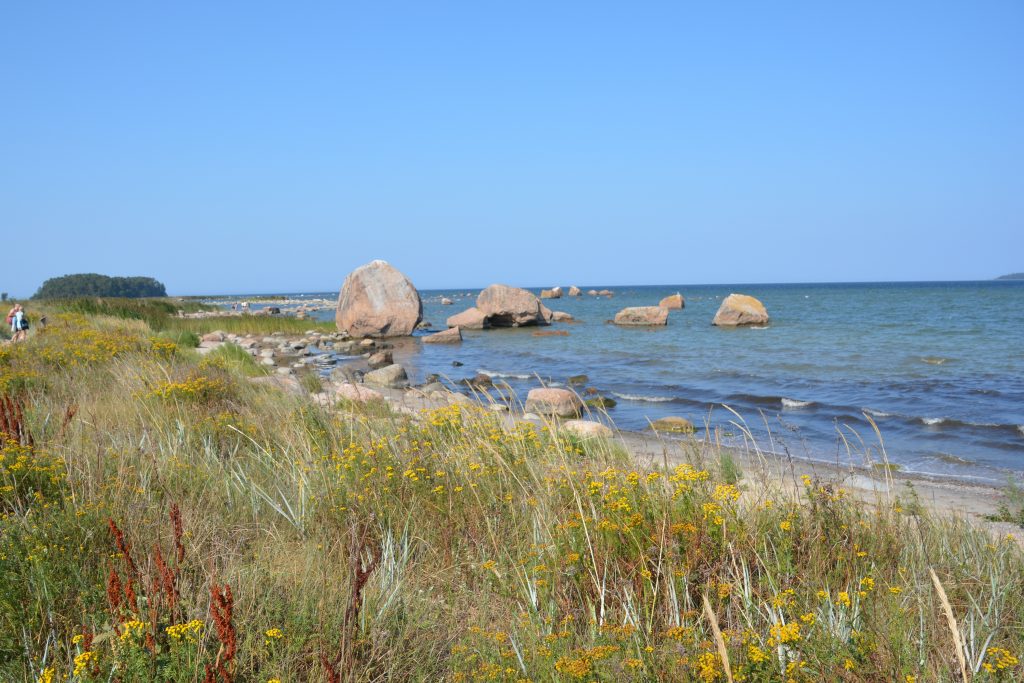
We took a few walks in the national park, including this stroll along the shore with all these glacial erratic boulders
We camped that night inside the park at the tip of Juminda Peninsula where a horrific naval disaster occurred in WWII. The Soviet army used a large flotilla of ships to evacuate tens of thousands of civilians and military personnel from Tallinn because the Germans had it surrounded. They ran into a German minefield just off the peninsula’s point and came under attack from the Germans on shore – in the end approximately 15,000 soldiers and civilians died. Some scholars say this was the single worst maritime disaster in history.
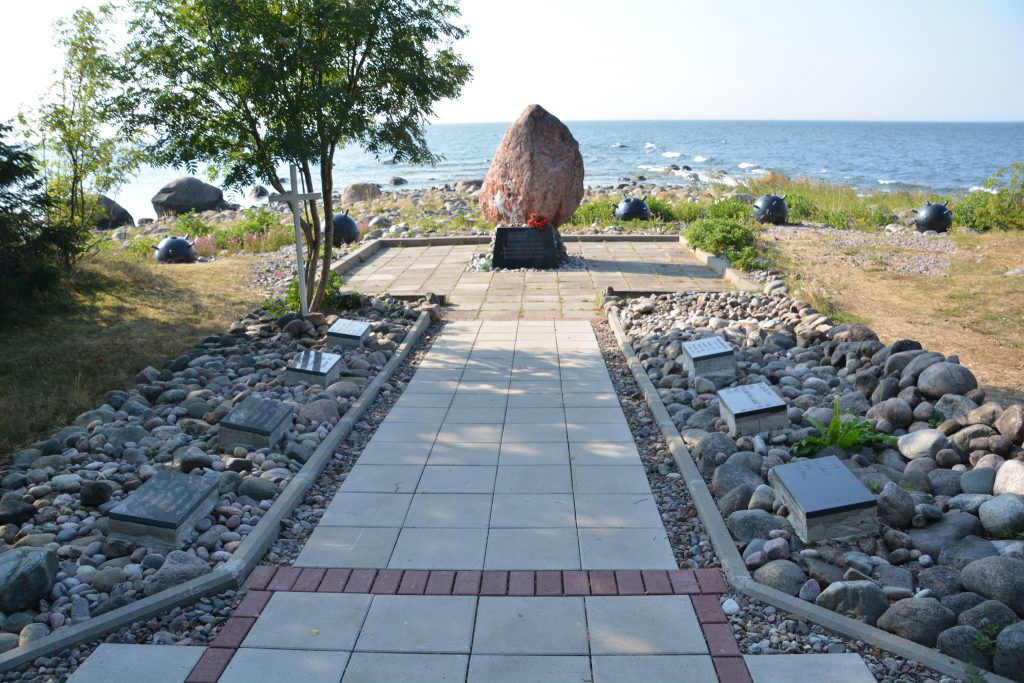
A modest memorial in an obscure place to commemorate the loss of 15,000 lives in one single maritime incident
On a cheerier note, that evening Julie and I raised our glasses to our 400th night on the road. We started our Follow the Sun journey in March of last year and since that time we’ve travelled extensively through North America, including almost two months in Alaska, then through Mexico, Central America and South America. We then shipped Tramp from Uruguay to Belgium and continued our odyssey into Scandinavia, dipped into Russia and now Estonia. In addition to the 400 nights on the road we made two trips back to Australia to see family and friends – including the addition of our first grandchild. It’s been a grand journey and we’re just getting started!





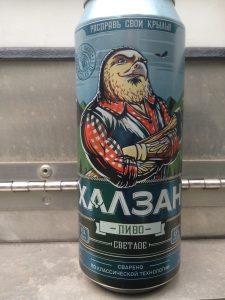














Comments
From the old to the new — No Comments
HTML tags allowed in your comment: <a href="" title=""> <abbr title=""> <acronym title=""> <b> <blockquote cite=""> <cite> <code> <del datetime=""> <em> <i> <q cite=""> <s> <strike> <strong>